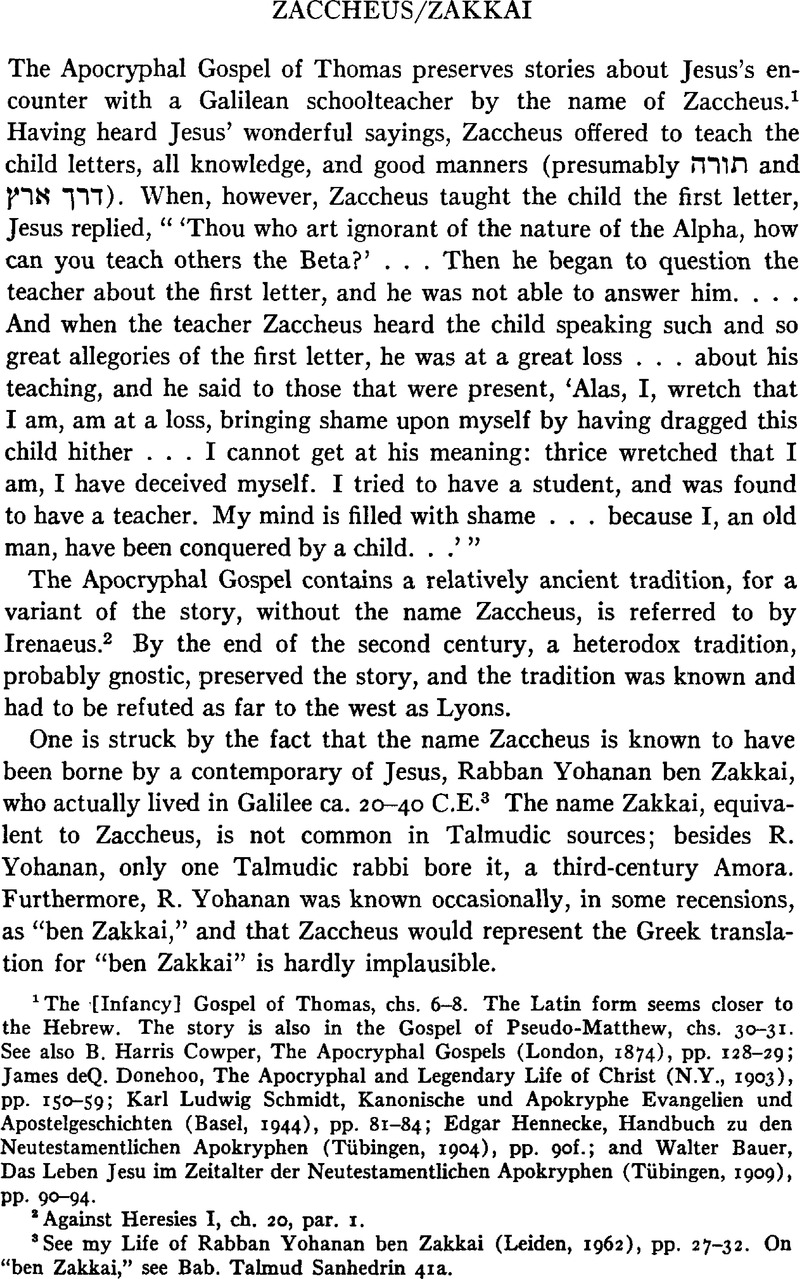No CrossRef data available.
Published online by Cambridge University Press: 23 August 2011

1 The [Infancy] Gospel of Thomas, chs. 6–8. The Latin form seems closer to the Hebrew. The story is also in the Gospel of Pseudo-Matthew, chs. 30–31. See also Cowper, B. Harris, The Apocryphal Gospels (London, 1874), pp. 128–29Google Scholar; Donehoo, James deQ., The Apocryphal and Legendary Life of Christ (N.Y., 1903), pp. 150–59Google Scholar; Schmidt, Karl Ludwig, Kanonische und Apokryphe Evangelien und Apostelgeschichten (Basel, 1944), pp. 81–84Google Scholar; Hennecke, Edgar, Handbuch zu den Neutestamentlichen Apokryphen (Tübingen, 1904), pp. 90f.Google Scholar; and Bauer, Walter, Das Leben Jesu im Zeitalter der Neutestamentlichen Apokryphen (Tübingen, 1909), pp. 90–94Google Scholar.
2 Against Heresies I, ch. 20, par. 1.
3 See my Life of Rabban Yohanan ben Zakkai (Leiden, 1962), pp. 27–32. On “ben Zakkai,” see Bab. Talmud Sanhedrin 41a.
4 Yohanan and Jesus did make use of the same parable, for different homiletical purposes, but this does not prove direct contact. Since they lived for a time within a few miles of one another, it is possible that they met, but we have no way of showing that it was probable. Compare Yohanan's saying in Bab. Talmud Shabbat 153a with Luke 14:15—24 and Matthew 22:1–14, and for a reconstruction of Yohanan's saying, see my Life, pp. 84–86.
5 But the original form must have been substantially simpler than the highly gnostic version before us.
6 For his policy at Yavneh, see my Life, pp. 153–64.
7 See Avot 1.15.